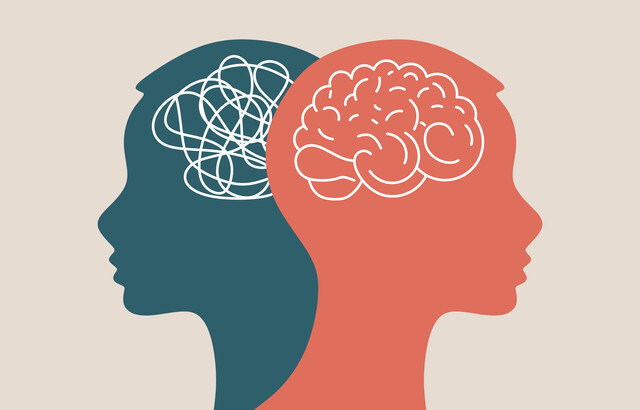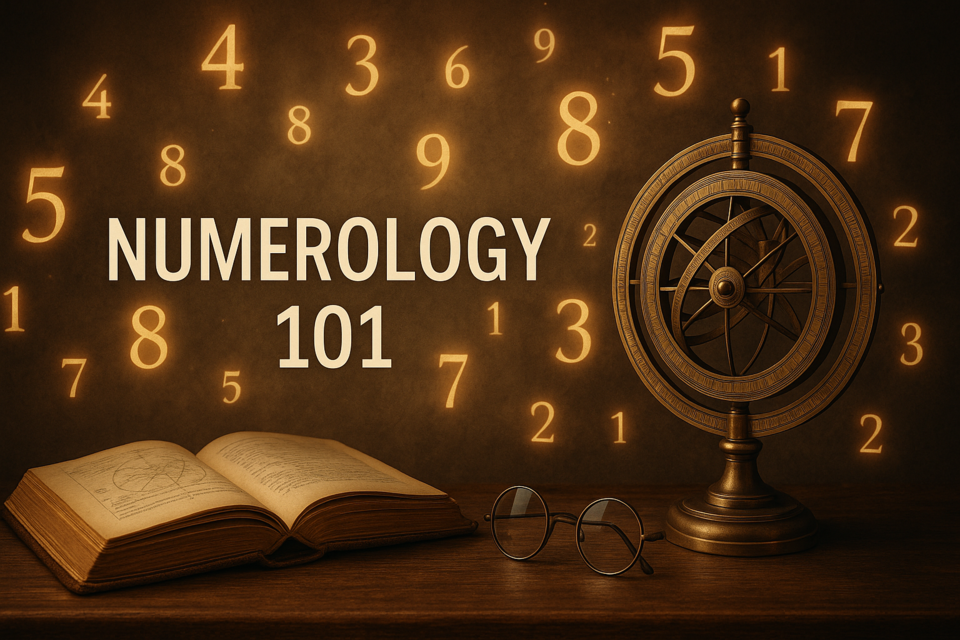Online Class: Applied Statistics 101

no certificate
with CEU Certificate*
-
14Lessons
-
22Exams &
Assignments -
2,126Students
have taken this course -
21Hours
average time -
2.1CEUs
Course Description
Welcome to an empowering journey through the world of Applied Statistics, where numbers unlock the secrets of data, and informed decisions are born. This course is your gateway to transforming intimidating data sets into clear, actionable insights using the power of statistics.
Begin your statistical adventure by mastering the art of Descriptive Statistics. Learn how to succinctly summarize vast amounts of data with key metrics like mean, variance, and skewness. This foundational skill set is just the beginning, as these summaries pave the way for deeper analysis.
Dive into the core of the course where the real magic happens—Inferential Statistics. Here, you will explore how to make compelling arguments and draw robust conclusions from your data. Questions like "Is the average value of one dataset significantly different from another?" will not only be answered but demonstrated through practical, real-world applications. You'll delve into advanced techniques such as cross-tabulation and chi-square tests, correlation studies, linear regression, Student's t-tests, analysis of variance (ANOVA), repeated measures analysis, and even factor analysis.
While the mathematical underpinnings of these tools are vast, this course emphasizes intuitive understanding over complex equations. Through a blend of common-sense explanations and a wealth of real-life examples, you will see these statistical methods come to life, demystifying data and revealing patterns and truths hidden within.
By the end of this course, you will not only possess the skills to describe and analyze data sets effectively but also the confidence to apply these skills in real-world scenarios. Whether you're tackling basic applied statistics problems or gearing up for more advanced study, this course will equip you with a solid foundation in statistical reasoning that is crucial for a multitude of careers and research paths.
Embark on this statistical journey with us and transform the way you view data forever. Whether for academic pursuits, professional advancement, or personal curiosity, mastering applied statistics opens a world of possibilities and gives you the tools to navigate the data-driven decisions of tomorrow.
- Completely Online
- Self-Paced
- Printable Lessons
- Full HD Video

- 6 Months to Complete
- 24/7 Availability
- Start Anytime
- PC & Mac Compatible
- Android & iOS Friendly
- Accredited CEUs

Course Lessons
Lesson 1. Descriptive Statistics Primer: Unpacking the Concept of Means
The lesson introduces the course's approach to descriptive statistics, focusing on different types of means to measure central tendency, including arithmetic, geometric, and power means. It aims to equip students with advanced mathematical tools for analyzing discrete data sets while assuming familiarity with fundamental statistics and probability concepts.Lesson 2. Beyond the Mean: Measuring Data Spread and Skewness
The lesson emphasizes variance and standard deviation as critical measures of how widely data points disperse around the mean, identifying whether data is tightly clustered or spread out. By utilizing moments, one can assess both dispersion and asymmetry, offering a richer understanding of data irregularities through skewness calculations.Lesson 3. Mastering Frequencies: A Guide to Data Representation
Frequencies, an essential statistical tool, offer a method to simplify data representation by replacing repeated values with summarized tables. This lesson explores fundamental frequency concepts, teaching students to construct tables and visualize data distribution using bar graphs and histograms.Lesson 4. Multivariate Data 101
Lesson Summary 3: This lesson introduces multivariate data, primarily bivariate, allowing analysis of relationships between data points. Through representations like tables and scatterplots, students learn to calculate descriptive statistics and use matrices for organizing data.Lesson 5. Exploring Cross Tabulations: Unveiling the Relationship Patterns in Multivariate Data
Understanding cross tabulations is essential for simplifying multivariate data, offering a clear view of relationships such as those between variables in bivariate data. Statistical hypothesis testing complements this by exploring the validity of the relationships through a structured analysis of the data.Lesson 6. Cross Tabulations and Hypothesis Testing: Chi-Square Methods
In analyzing cross tabulations through chi-square, this lesson emphasizes formulating hypotheses and calculating expected frequences where critical values help confirm statistical significance of variable relationships. Interpretation of chi-square tests provides insight into data beyond initial conjectures.Lesson 7. Exploring the Depths of Correlation in Statistics
In this lesson, we examine a method for expressing how two statistical variables relate linearly, using Pearson's correlation coefficient. It covers the importance of covariance and the calculation of correlation coefficients, underscoring that correlation does not imply causation.Lesson 8. Understanding One-Sample Student's t-Tests: A Deep Dive into Hypothesis Testing
The one-sample Student's t-test is a statistical method for evaluating if a sample mean differs significantly from a known population mean, crucial for quality control processes, such as checking machine output. Following steps like hypothesis formulation, critical value identification, and statistical calculation, this lesson guides application under assumptions of normal distribution and random sampling.Lesson 9. Exploring the Significance of Differences: The Paired t-Test Method
This lesson delves into the paired two-sample Student's t-test, scrutinizing whether two correlated data sets have distinct means through calculations of differences and hypotheses tests. Adopting similar principles to one-sample tests, students learn to determine statistical significance in experiments with examples from medical studies.Lesson 10. One-Way ANOVA: A Leap Beyond Traditional t-Tests
In this lesson, we learn how one-way ANOVA is used to compare the means of multiple sample groups by analyzing variances between and within these groups, utilizing the F-test for hypothesis testing. Unlike Student’s t-tests, ANOVA allows broader comparisons while requiring assumptions of normality and population variance equivalence within independent samples.Lesson 11. Understanding Repeated Measures Design
This lesson explored repeated measures design as an alternate within-subjects method to analyze dependent datasets, typically generated when a group is tested across multiple scenarios. By modifying the F statistic calculation, repeated measures ANOVA offers a tailored approach for determining significant differences in means under these conditions.Lesson 12. Understanding Factor Analysis: Techniques and Applications
Factor analysis provides a qualitative approach to understanding how different variables impact measurements, divided into exploratory and confirmatory methods. While exploratory factor analysis identifies influential factors, confirmatory factor analysis tests predefined factor models against observed data.Lesson 13. Stepwise Linear Regression: A Broader Overview
Lesson Summary 3: Scatterplots depict bivariate data and lead to the application of least-squares regression to derive a line minimizing squared distances from data points. The lesson then examines the fundamentals of stepwise regression, useful when dealing with numerous independent variables.Lesson 14. Exploring Path Diagrams in Linear Regression
A detailed methodology to calculate standardized coefficients is presented, enhancing the analysis of multivariate data through matrix operations. Using path diagrams, this lesson elucidates the processes of visualizing and quantifying effect relationships among variables.
Learning Outcomes
- Calculate the geometric mean of a given data set and compare it with the arithmetic mean to demonstrate differences in data characterization.
- Define and calculate the arithmetic mean of a given data set to understand the central tendency of the data.
- Calculate the variance and standard deviation of a given data set to assess its dispersion around the mean.
- Demonstrate the ability to compute skewness to evaluate the asymmetry of a data distribution.
- Create a frequency table to represent a given data set, calculating relative, cumulative, and cumulative relative frequencies accurately.
- Demonstrate the ability to interpret bar graphs and histograms by analyzing visual representations of frequency data efficiently.
- Demonstrate the ability to create and interpret scatterplots, calculate mean vectors, and covariance matrices for bivariate data sets.
- Recognize and differentiate between univariate and multivariate data by describing specific examples and key characteristics.
- Demonstrate the ability to create cross tabulations for bivariate data sets by organizing gender and handedness into a contingency table.
- Identify and define the null and alternative hypotheses in a statistical hypothesis test for analyzing cross tabulations related to gender and handedness.
- Demonstrate the ability to interpret chi-square test results and determine hypotheses significance based on critical values
- Understand how to calculate expected frequencies in a cross tabulation using row, column, and grand totals
- Demonstrate the calculation of Pearson's correlation coefficient for a given data set to quantify the linear relationship between two variables.
- Demonstrate mastery of lesson content at levels of 70% or higher.
Additional Course Information

- Document Your Lifelong Learning Achievements
- Earn an Official Certificate Documenting Course Hours and CEUs
- Verify Your Certificate with a Unique Serial Number Online
- View and Share Your Certificate Online or Download/Print as PDF
- Display Your Certificate on Your Resume and Promote Your Achievements Using Social Media

Choose Your Subscription Plan
No Certificate / No CEUs
This course only
| Includes certificate | X |
| Includes CEUs | X |
| Self-paced |

|
| Instructor support |

|
| Time to complete | 6 months |
| No. of courses | 1 course |
Certificate & CEUs
This course only
| Includes certificate |

|
| Includes CEUs |

|
| Self-paced |

|
| Instructor support |

|
| Time to complete | 6 months |
| No. of courses | 1 course |
Certificates & CEUs
Includes all 600+ courses
| Includes certificate |

|
| Includes CEUs |

|
| Self-paced |

|
| Instructor support |

|
| Time to complete | 12 Months |
| No. of courses | 600+ |
Certificates & CEUs
Includes all 600+ courses
| Includes certificate |

|
| Includes CEUs |

|
| Self-paced |

|
| Instructor support |

|
| Time to complete | 24 Months |
| No. of courses | 600+ |
Student Testimonials
- "The instructor always got back to me quickly when I had a question or comment. He also graded the assignments and exams in a very timely manner." -- Cindy C.
Related Courses
-
 3 hours
0.3 CEUs
Etiquette 101
+ More Info
3 hours
0.3 CEUs
Etiquette 101
+ More Info
-
 11 hours
1.1 CEUs
Mediation 101
+ More Info
11 hours
1.1 CEUs
Mediation 101
+ More Info
-
 9 hours
0.9 CEUs
Aromatherapy 101
+ More Info
9 hours
0.9 CEUs
Aromatherapy 101
+ More Info
-
 7 hours
0.7 CEUs
Nutrition 101
+ More Info
7 hours
0.7 CEUs
Nutrition 101
+ More Info
-
 16 hours
1.6 CEUs
Psychology 101
+ More Info
16 hours
1.6 CEUs
Psychology 101
+ More Info
-
 12 hours
1.2 CEUs
Office Skills 101
+ More Info
12 hours
1.2 CEUs
Office Skills 101
+ More Info
-
 10 hours
1.0 CEUs
Autism 101
+ More Info
10 hours
1.0 CEUs
Autism 101
+ More Info
-
 5 hours
0.5 CEUs
Astrology 101
+ More Info
5 hours
0.5 CEUs
Astrology 101
+ More Info
-
 6 hours
0.6 CEUs
Cybersecurity 101
+ More Info
6 hours
0.6 CEUs
Cybersecurity 101
+ More Info
-
 7 hours
0.7 CEUs
Numerology 101
+ More Info
7 hours
0.7 CEUs
Numerology 101
+ More Info
-
 9 hours
0.9 CEUs
Marketing 101
+ More Info
9 hours
0.9 CEUs
Marketing 101
+ More Info





